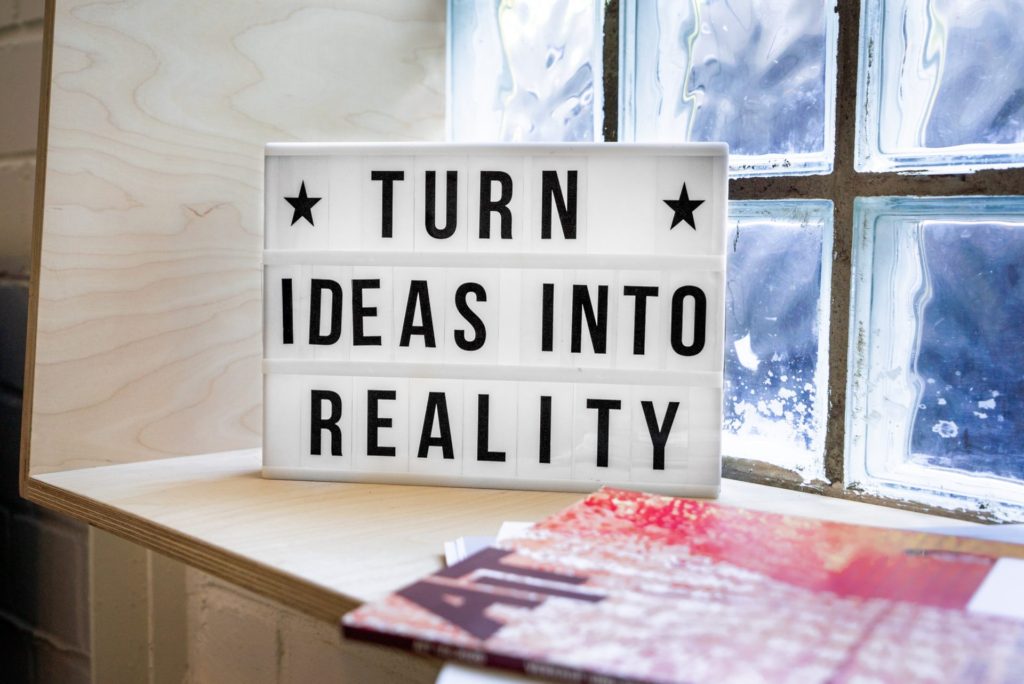Firstly, allow me to wish you all a very happy New Year! We hope you’ve had a good rest and that you’re refreshed and pumped up for the year ahead.
To New-Year’s-resolution, or not to New-Year’s-resolution? That’s usually the question.
With each new year we’re filled with renewed hope and aspirations and we always aim to make this year the best year ever.
There’s absolutely nothing wrong with that.
In fact, if you’ve read some of my previous posts, you would know that I’m a huge advocate for planning ahead – and I am definitely guilty of making a list of resolutions each year.

Resolutions normally come in the form of a weight-loss goal; a promise to eat better and exercise more; read more books; participate in religious or spiritual practices; get up earlier; stop smoking; go on more date nights; save more money and so forth.
If you’re someone who has managed to meet their New Year’s resolutions without fail – then, kudos. You’re a rare breed!
But if you’re one of those people whose plans seems to dramatically fall apart at the seams almost as soon as you’ve begun – you are certainly not alone.
The Wrong Way to set New Year’s Resolutions
Again, there is nothing wrong with setting goals.
But, if you keep setting goals and failing at them, you’re setting yourself up for feelings of inadequacy and frustration. This, in turn, could lead to demotivation and could become a trigger next time you try to set yourself goals.
So, not a great way to start off a new year.
According to research, about 80% of all people fail at achieving their New Year’s goals – me included.
Here are a few reasons why this happens.
-You don’t give yourself enough time to think about them.
Do yourself a favour – don’t decide what your new goals will be the morning after your massive New Year’s Eve party. You’re doing yourself a massive disservice.
-You don’t write them down.
How will you be able to hold yourself accountable when you can’t remember exactly what it is you’ve set out to do?
-You’re giving yourself too many goals.
Up to three goals are achievable, depending on their size, of course. Anything more than that will very likely lead to failure.

-The goals are unrealistic and bound to fail.
Can you say ‘self-sabotage’? If you continue setting yourself up for failure at the start of each new year, then that’s exactly what you’re going to feel like. And that’s certainly not great for your mental health.
-Your short-term goals don’t align with your long-term goals.
If your long term goal is to lose 20kg, then your New Year’s resolution to use your spare time to take up candle-making as a new hobby doesn’t really fit. Why not spend that time working out an exercise regime instead? Of course, if there’s spare time after that, then by all means, make candles.
-You don’t know what your long-term goals are.
This is a big one and more of an existential question, really. Don’t worry if you’re not sure what they are just yet – just remember, though, that you would need to sit down and think about what you actually want out of life at some point in time.
-You’re coerced into achieving goals that you have no interest in.
Perhaps your partner / friend / sibling coerces you into taking up a cooking class with them as part of your resolutions. (See what happens when you haven’t thought about it in advance?) You absolutely loathe cooking, but don’t want to start off the new year with a fight, so you give in.
If it’s not something that you’re truly interested in achieving, you’re not going to. Simple as that.
How to Correctly Set Goals for the New Year
The truth is that setting goals is actually good for you. It gives you a target to reach, something to attain and look forward to.
New Year’s resolutions can be reached. It just depends on how you set them up.
We recommend making use of SMART goals – that’s S.M.A.R.T.

During my training as an Occupational Therapist, writing out treatment plans was crucial. Working in adult rehabilitation, in order to ensure that patient treatment sessions were successful, we spent many hours formulating goals that were not only achievable, but that instilled a sense of achievement as well as an eagerness to continue in the following session.
Imagine presenting the patient with an unrealistic treatment plan where it was nearly impossible for the goals to be achieved. You’d end up with them feeling like a failure, not wanting to participate in rehabilitation and with a poor outlook of the future.
This is completely demotivating and not the desired outcome at all.
The very same would apply to you when setting your goals.
Let’s break it down.
1. S – SPECIFIC
Be specific about what it is you want to achieve.
Incorrect: I want to start cycling more this year.
Correct: I want to cycle every Monday and Wednesday morning this year.
2. M – MEASURABLE
Every goal needs a yardstick against which progress can be measured. If not, then you’ll never know if you’re actually making progress or remaining stagnant.
In the example above, you could add in time or distance as your unit of measurement.
Correct: I want to cycle for 30 minutes / 3km every Monday and Wednesday morning.
3. A – ACHIEVABLE
You have to make your goals achievable. (See the ‘self-sabotage’ paragraph above).
If you’ve never cycled in your life, don’t make it your goal to cycle for 3km on your first try. Start at 500m. In this way, you’ll attain your goal, feel positive about it and want to do it
Conversely, aiming for 3km on your first time out, and getting winded after 5 minutes, will make you feel like an utter failure and not motivated to jump into that seat again.

4. R – REALISTIC
We’d all love to win the Lottery. Some people aspire towards being the next Elon Musk or Kim Kardashian West. Is this going to happen? My guess – probably not.
Instead of setting a goal to win the jackpot, why not be realistic and set a goal to start saving more.
If you’re interested in technology and space, why not enrol in an online course or join an interest-group.
If winning the People’s Choice Award for being a fashion icon is something you’d like, why not start an Instagram account showcasing your own style.
5. T – TIME-BASED
Set yourself a target. New Year’s resolutions don’t necessarily have to span an entire year. Some goals can be attained within a few months, depending on what exactly it is.
The point is that you need to give yourself deadlines. For example, if you want to do an online course, give yourself six months in which to attain this goal. Say, by 30 June this year I want to have completed my course in bookkeeping.
In this way, you’ll be creating a sense of urgency for yourself and also holding yourself accountable.
*****
We hope these tips have helped.
In the end, when you make New Year’s resolutions (or set any goals for yourself), you should try to take them seriously. Or rather not make them at all.





